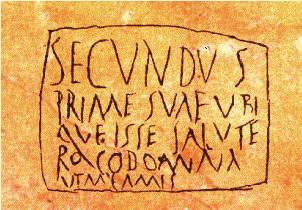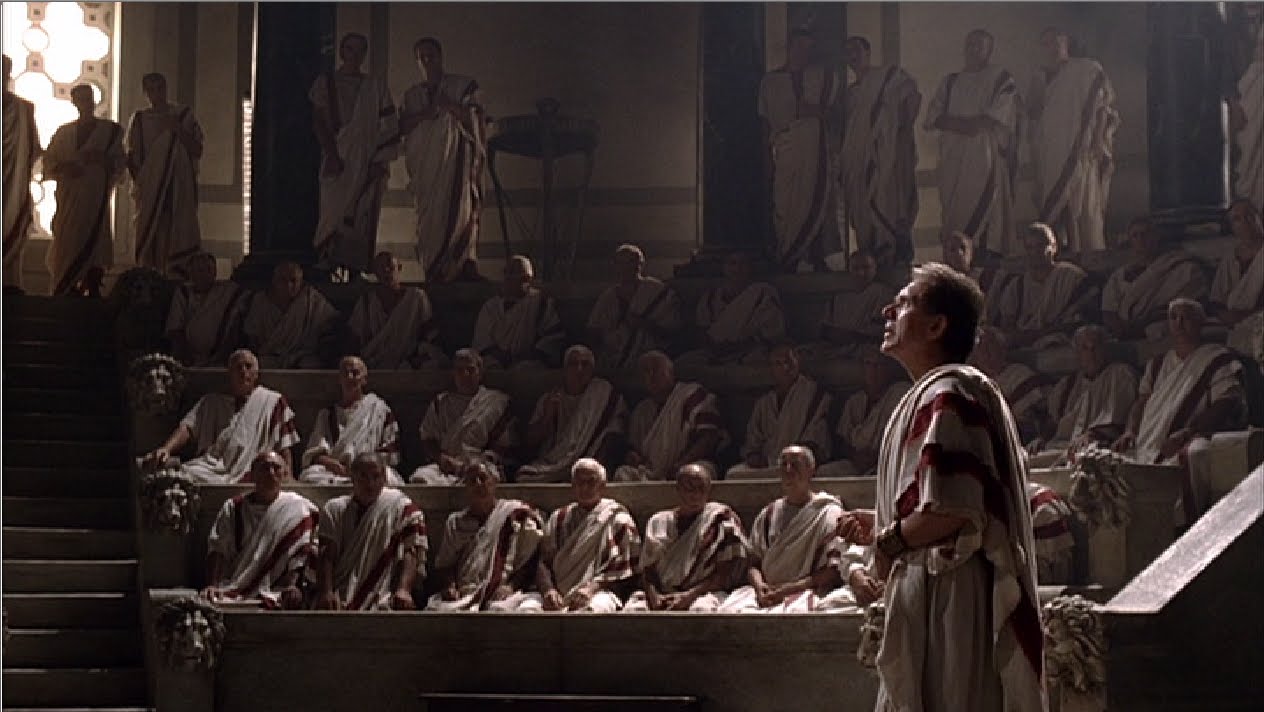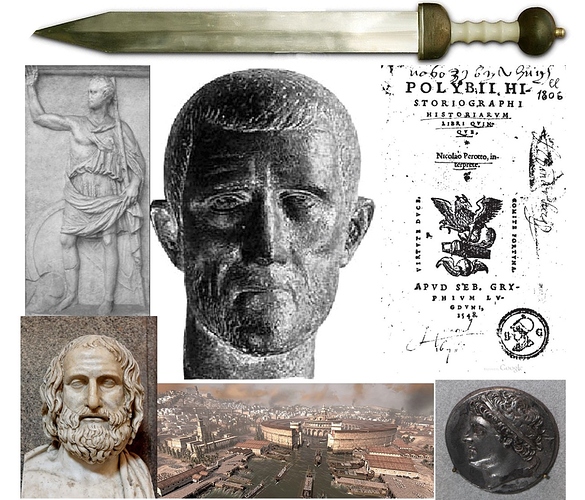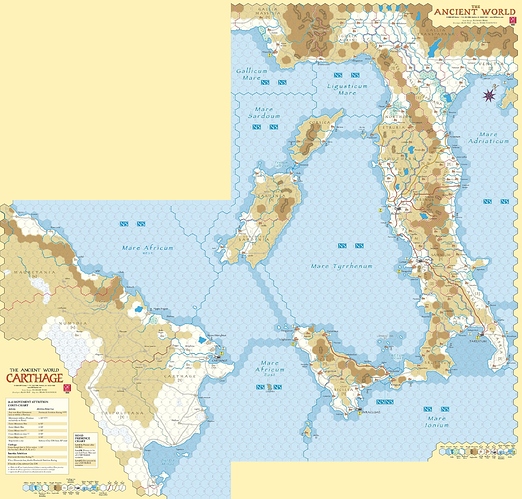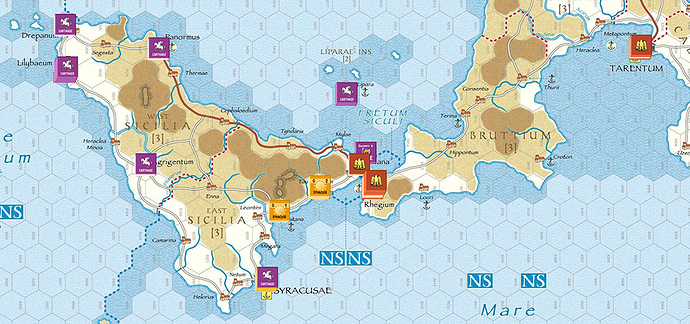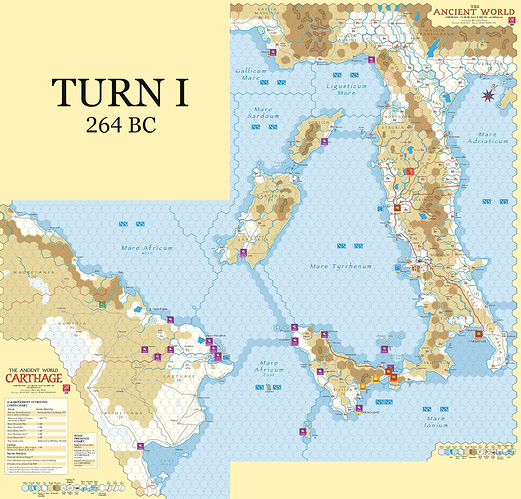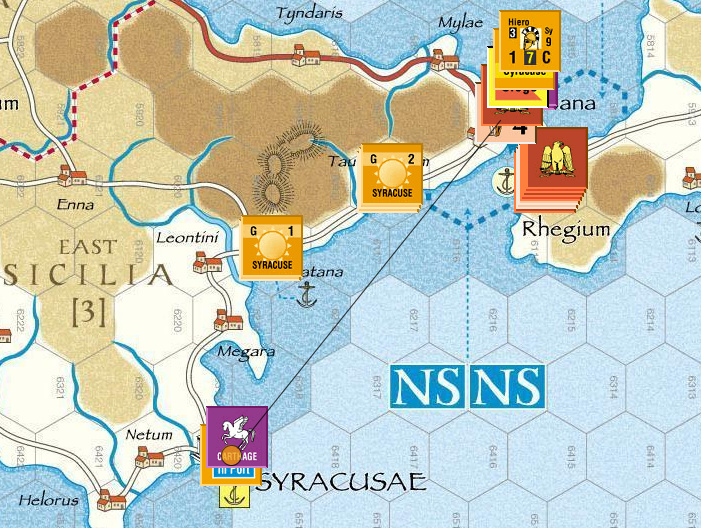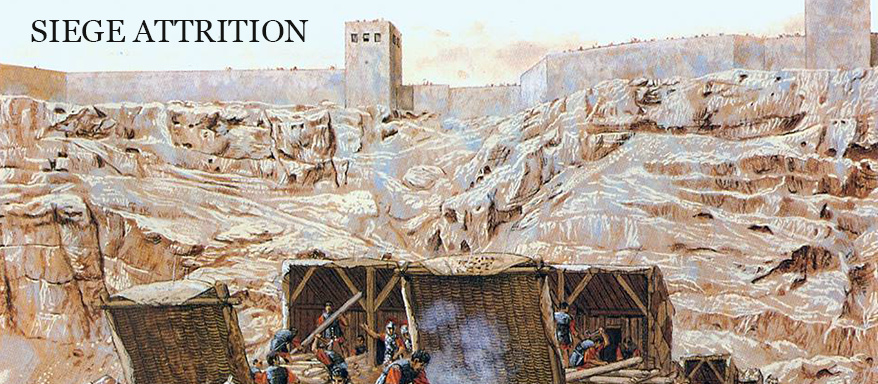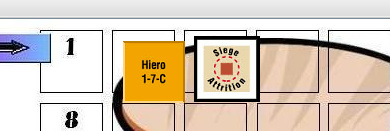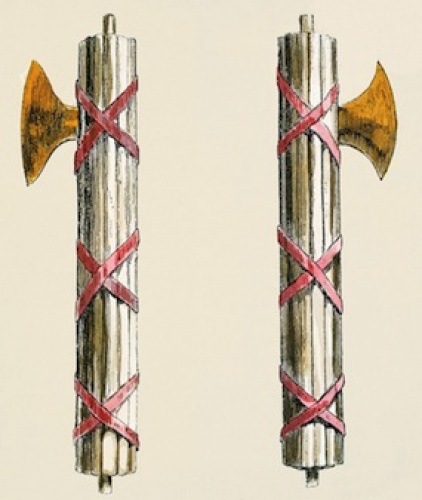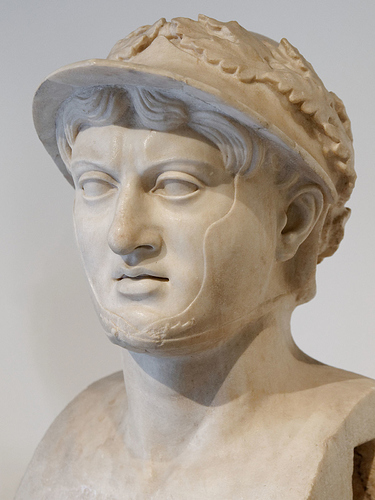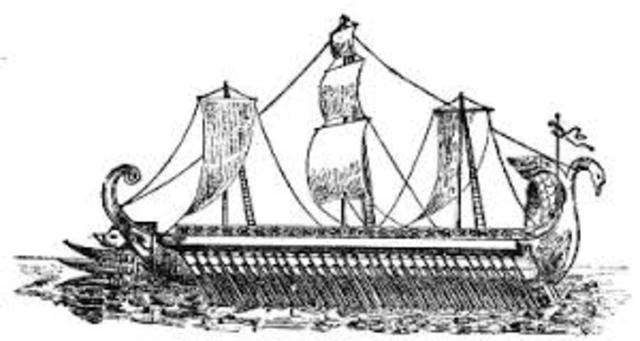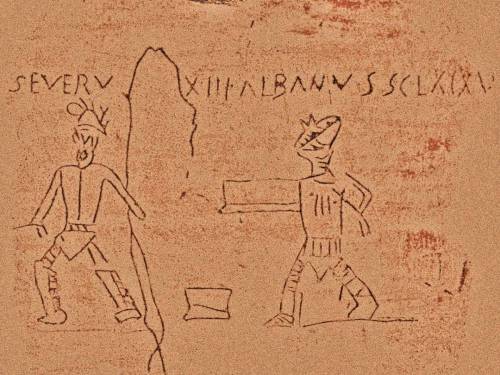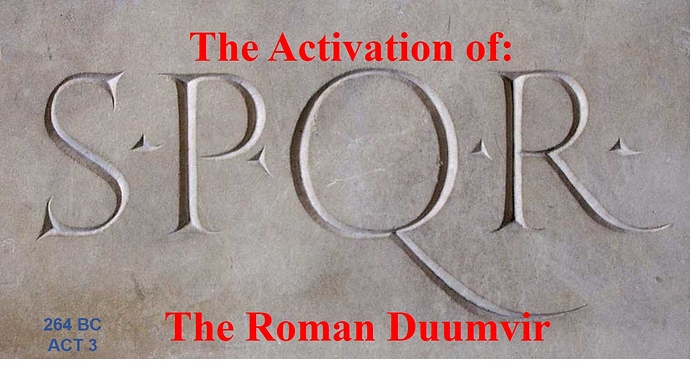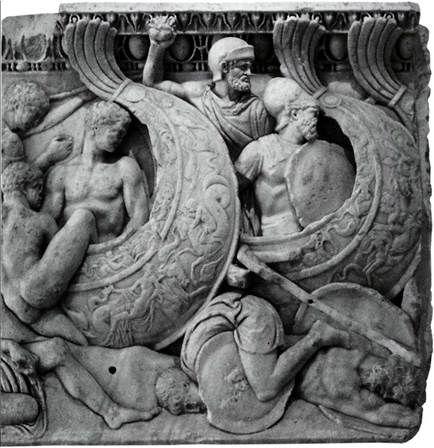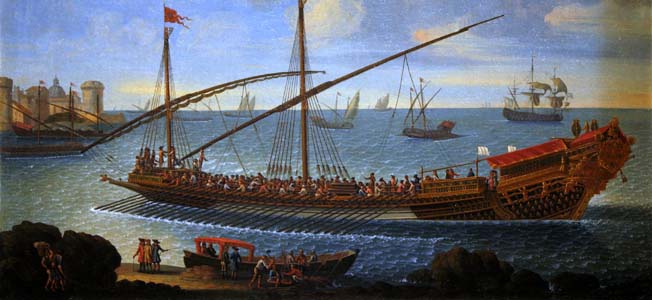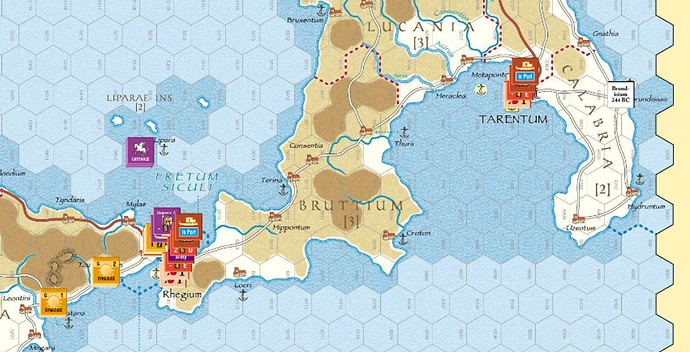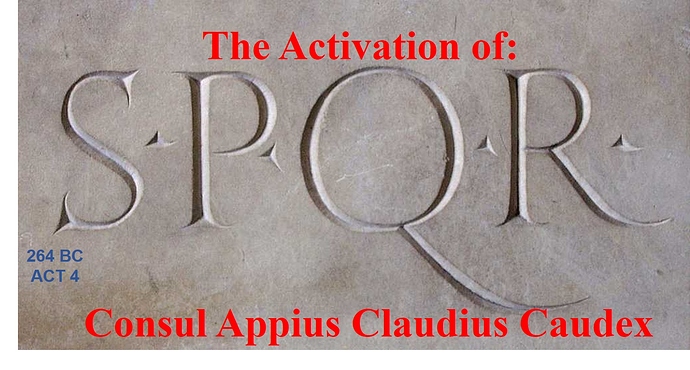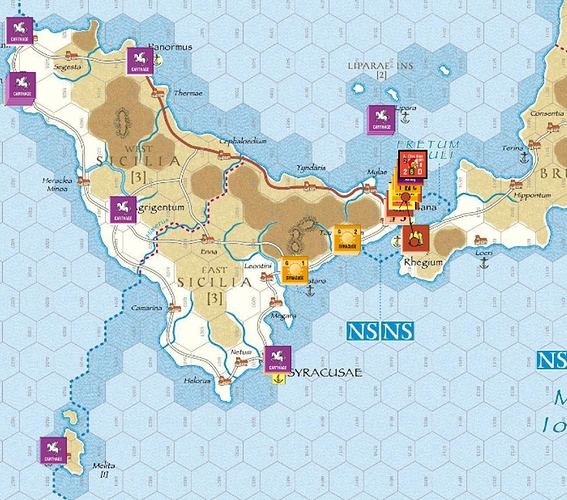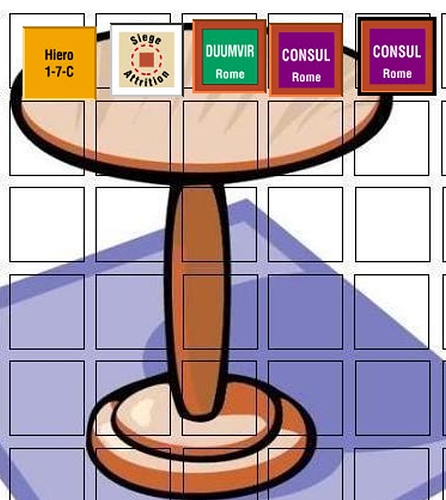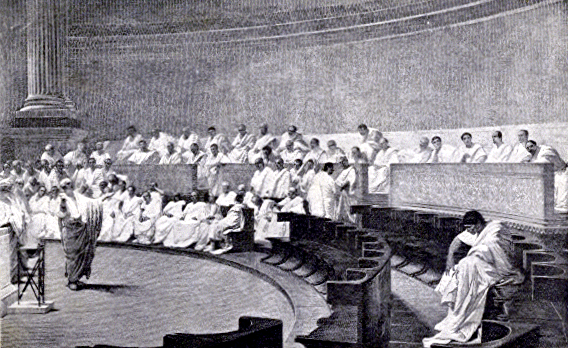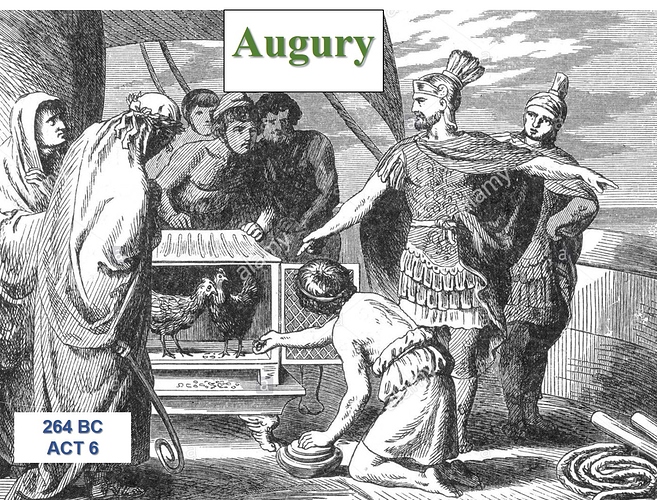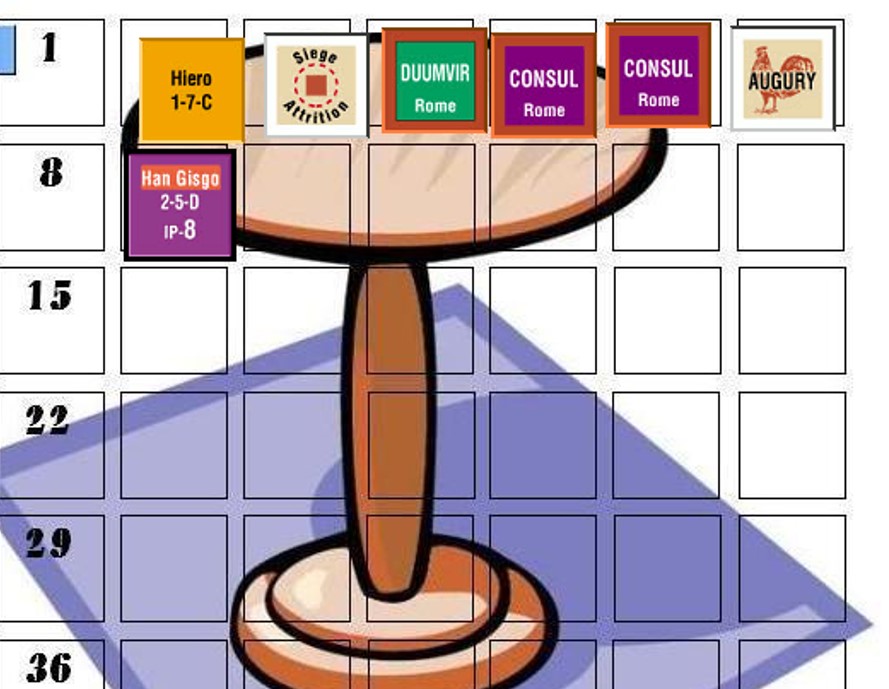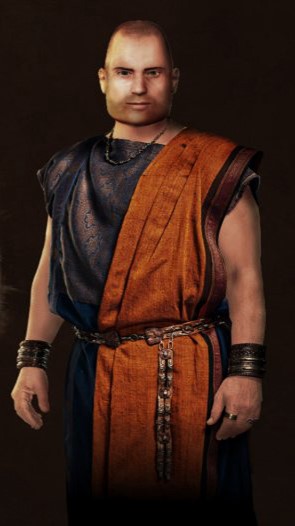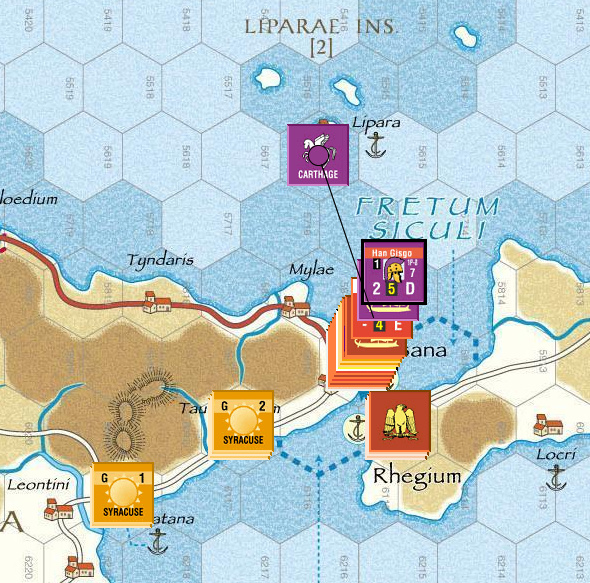Hanno moves to Messana to help Hiero take the city (and also because we don’t trust him, Hiero can switch allegiance to the Romans in the game, and it’s almost guaranteed to do so). He takes the northern red road (white roads do not exist in this time period) to avoid attrition loss.
As he approaches Messana, Fulvius, from inside the besieged city, tries to intercept.
There’s nothing in the rules disallowing an interception by a besieged force, although there’s disallowance of movement. We took it as understanding that as long as you commit to battle you can indeed try to intercept. Also, even if the interception suceeds he’s taking a big risk leaving the city undefended,
However, he fails the interception roll. It’s an 8. and he needed a 5 (and had a +1 modifier because of adjacent hex interception, so he needed to roll 0 to 4).
Fulvius now has an interception failed marker that gives any troop attacking him a +2DRM to the attack roll.
Hanno likes this, so he decides to attack Claudius army camped outside the city, bringing Hiero to help him.
The 2nd battle of Messana is on.
Now, before going into the battle, Fluvius tries to coordinate with Claudius, leave the city and join the battle.
However he fails the roll and remains inside, not liking the odds.
This is a complex battle, so let’s look at the DRMs…
First tactical ability (how good a commander is and how well a commander is feeling the day of battle). It’s Claudius versus Hanno (Hiero is an attachment). Tactical rolls are 8 for Cartahge and 5 for Rome](http://orokos.com/roll/627445). Claudius has a D tactical rating and Hanno a C, so that’s 6 vs 3, or a +3DRM total.
Next force ratio. Carthage has 43SP and Rome 32. That’s a 1-1 combat odds ratio, or no DRM.
No sicde has enough cavalry superiority. 0DRM.
One elite contingent of Syracusan cavalry gives +1DRM.
After battle status. Because the first battle of Messana, Hiero’s and Claudius’s armies are disrupted. Any disrupted unit on the attack adds a -3DRM and on the defense a +1DRM. So it’s a net -2DRM. I thoght a lot about bringing Hiero, and this -2DRM is offset by the Syracusan army negating up to other -6DRM that would have been applied on it’s absence, so Hiero is contributing a net +4DRM.
Hanno’s army has some experience and a Carthaginian army efficiency of 0. So no DRM there. (most Carthaginian armies start with a -3 efficiency, making combat the first years very risky).
So: Total +2DRM.
Combat roll is a 9. +2 that’s a net 11.
Or a savage 20/30. Attackers lose 20% of their army and defenders 30%. Defenders must retreat.
Rome loses 8 SP infantry (2 each contingent) and 2 SP cavalry (will take from the auxiliaries unless you tell me otherwise). Carthage a total of 9SP, divided as equally as possible, one of them being a cavalry SP.
Because the combat loss table is a percentage of the army, the bigger army (normally attacking) tends to lose similar total numbers as the defending army even if the percentage is lower.
Pursuit and butchery factor is 1. Roll is a 0. 1 times 0 is 0 so no extra loses.
This is a Carthaginian victory, but not a major one. Claudius army is disorganized. Hanno’s is disrupted.
This is what’s left of the combined Carthaginian/Syracusan army in Sicily.


And this is Caludius’s consular army:
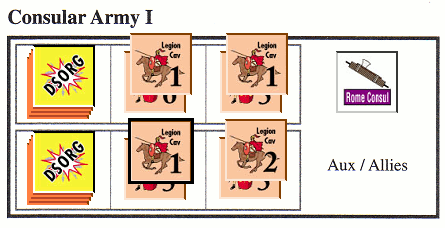
Claudius decides to enter the city so next turn the Romans can guarantee a combined attack.
Hanno decides this is good for a year of campaining, and joind the siege without attempting to take any further action.
Next pull is siege attrition (pity I didn’t get to place my fleet on the siege on time):


